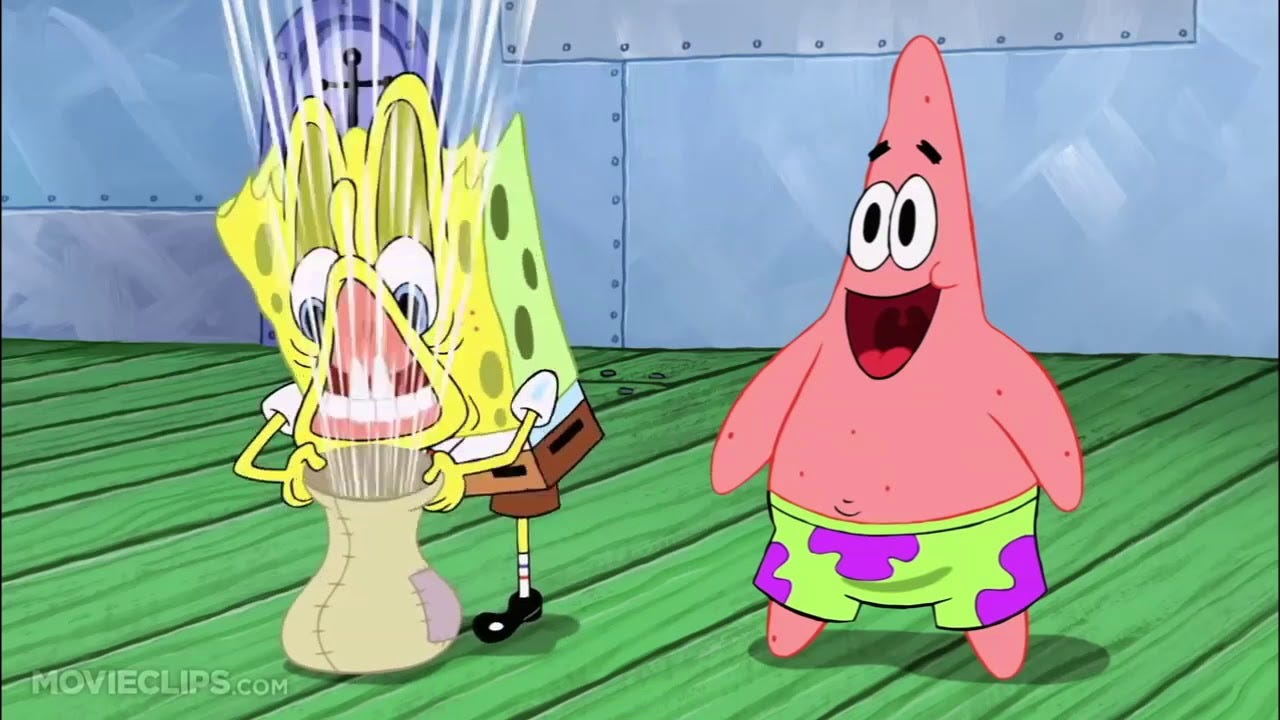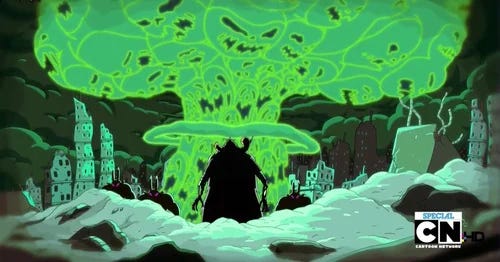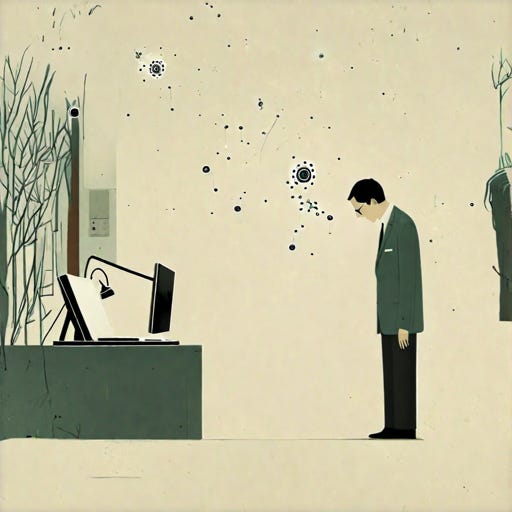Artificial Unintelligence
A.I. video creation, A.I. voice mimicking scams, "art," chatbots, and more. A.I. is making eerie jumps. I think it's time to be more than concerned.
For the last several months, I’ve intentionally kept myself from writing anything at length about artificial intelligence. Sure, I have plenty of opinions about it. However, the whole A.I. Question remains cloudy on account of its freshness. I’ve noticed that a lot of opinions about A.I. that people have are largely speculative. Since it’s in its infancy, we laypeople can’t predict its direction or development as much as we might be able to with a much more stable system. For example, with computer operating systems such as Windows or Mac, we can pretty confidently predict that any updates or developments are going to be similar in design and function to the original. After all, Windows has more or less had the same skeleton since its inception. Same thing with Mac. But with a system such as A.I. whose whole essence is to develop and learn in a multidimensional way, prediction seems moot for people who aren’t in the throes of its development.
Another reason that I’ve refrained from writing about A.I. is that I wasn’t sure I could do the subject justice. I wasn’t sure that my production could meet people’s curiosity about this potentially techno-hellish seeming phenomenon. After all, what do I really know about this thing – this “intelligence”?
At the time I began writing this piece over a month ago, disagreements about A.I.’s trajectory were more “allowed” in my opinion. Now it’s heating up, and it's becoming more clear what we might be dealing with in a decade or less.
First in this edition’s news:
No longer is A.I. just a language model that allows you to chat with, and learn from, a computer. Artificial intelligence video production has recently made uncomfortably rapid developments, and it appears to only be quickening. Creators will soon be able to simply enter a text prompt into a website, and an artificial “intelligence” will then proceed to create an entire video based on the prompt. Developers are already doing it.
It’s freakishly accurate, freakishly realistic if desired, and freakishly versatile.
Here’s some footage:
This is not real footage. Nobody filmed any of this, nobody drew any of this, nobody animated anything in this video. These are not real people.
Normally I’m not one to be a doomsday prophet, nor a fearmongerer; but this is easily the most frightening technological development in… well, perhaps ever. Suddenly, predictions about this technology aren’t as speculative.
The living consequences of such technology are certainly more potentially destructive over the long run than even a weapon of war. At least if I get blown up into a billion bits by a freakishly hellish weapon, I won’t have to live through a panicking timeline as that’s collapsing and changing in unfathomable ways before our very Apple Vision Pros eyes.
Yet, as potentially damning as this news is, it’s oddly quiet out there. People should be raising awareness about this technology. Unsurprisingly, people are stuck in the horizontal dimension and cannot see the firestorm in plain sight – something I touched upon in my entry on social media. It’s like gaining weight: one day we’re fine, then a year later we’re overweight.
“How did this happen?!”
What happened is we forgot to panic in the interim, then freaked out at the point of near-rock-bottom. I have said it before, and I will say it again: the average population has neither the incentive nor the wherewithal to see past their immediate and immediately impending circumstances – i.e., the horizontal dimension. Most people can’t be blamed for this because of this lifestyle they’ve inherited, but that’s a longer discussion for another time. Moving on.
In 100 years, we’ve gone from the first airplanes and cars to spatial computing goggles that superimpose technological imagery on the physical world around us, and artificial intelligence that creates whatever videos or images that we want. At this rate, we’ll gain more weight than we’ll be able to lose by the time the panic starts to set in.
Please don’t succumb to daily comfort, and in so doing, let awareness of this technology fly over your head. We need to be talking about it, and not just through a curious lens – it’s time we begin repudiating this.
A.I. Video and Its Real-World Problems
Let’s talk about actual implications of this A.I. video creation.
In theory, should this technology continue its pace of development, you could find yourself sitting in a courtroom watching footage of yourself committing a crime that you did not commit. Your employers or competitors could blackmail you, producing footage of things, people, places, or events that are not real.
Your enemies could access this technology, and enter a prompt into their computer saying “Depict John Smith from a CCTV camera, dated 6/24/2037, committing grand theft auto on a man driving a 2022 silver Honda Pilot on the corner of Frank and Silver Street,” and you’re done.
Or maybe worse yet, and perhaps more terrifying to the deathly introspective types, we may well be tempted to become the very bad actors that we fear. What new ways can we seamlessly express the passions that hide within us, that might otherwise have had no outlet?
Where the rubber meets the road on this tech, we’re looking at something that’s indistinguishable from dark magic, sorcery, witchcraft, divination. Our race has stumbled upon a mythical artifact – ancient, and having been buried deep within our own minds and the minds of an ancient evil so detestable and inconceivably foul, of such stench and capability, that suddenly the apocalyptic predictions about A.I. are so possible that they may as well have already happened, that the damage may as well have already been done; and perhaps for this very reason, they should be preliminarily resisted according to the magnitude of the worst that we can imagine coming from it.
Thanks for the fire, Prometheus.
The p*rnography business will certainly boom with freakish, demented representations of people who wouldn’t have consented to such a presentation in ten-million years. This is already happening, by the way; so you can imagine that it’s only going to get worse.
3D animators – or any animators, really – are sharting their britches. This new AI video software is capable of rendering footage in the style of 3D animation (see timestamp 5:38 in the video for an example of this).
I fear (for good reason) that legislation will not move quickly enough to stop this development from causing wide-spread harm; and even if the Law moved quickly, it will not stop criminals from having this software – not like any other software that criminals misuse. This situation is not unlike Pandora’s Box, or perhaps the Magical Bag of Wind from SpongeBob SquarePants.

An image more akin to what I’m imagining comes from a television show called Adventure Time:

Artificial Intelligence Chatbots
I foresee that artificial intelligence, especially like its currently popular ChatGPT iteration, will become something like a demigod to the people who can access it. In all fairness, if you can learn how to intelligently use the thing, it’s a damn neat tool. But for those who aren’t so critically inclined, it might acquire for itself a genie-like character that can (attempt to) answer life’s pressing questions. Thank goodness! Otherwise, people might have to dig deep within their hearts and find Christ and Truth there… phew.
We’re already at a point where A.I. text models like ChatGPT can actually respond to you as if it’s a certain person, and respond according to a pre-programmed perspective. So far, we’ve seen it portray itself as everyone from Martin Luther King to Hitler. I can already see the advertisements:
For just $12.99/month, you can have unlimited access to Tarik the Genie — Relationship troubles? Need help coping with your 16-hour office workday? Trouble getting on board with the state-sponsored, sustainable, safe, and effective Impossible Meat and “I Cant’ Believe I Haven’t Died Yet From Eating This Fake Industrial Bullshit” diet? Have all of your pressing questions answered personally, instantly, and deeply with Tarik the Genie, a state of the art chatbot catered to each individual!
What on Earth is going on? If anyone tries to sell this artificial intelligence stuff as innocent and “under our control,” be very skeptical. Just in case you needed to be reminded, humans are the ones making these things (probably with help from “friends” on the other side) — and as it is, we’re barely under our own control. Don’t expect this stuff to be easily tamed.
It’s just now occurring to me that developers will definitely try to monopolize the person of Christ in an A.I. chatbot — unless it’s already been done, but in any case, I am going to save myself the sleep tonight and research that another day.
A.I. “Art”
If you aren’t already aware, people are using artificial intelligence – easily accessible to anybody with a phone and internet connection (about 5.3 billion people according to recent estimations) – to produce unique images that match the prompt input.
To provide an example of this, I asked an A.I. to produce an image based on the prompt “blogger angry at artificial intelligence.”
This is A.I. “art.” Nobody drew this. A computer made it in less than 20 seconds, a homunculus made from thousands if not millions of real people’s artwork. It deeply disturbs me. I think it should disturb you, too. Allow me to explain by discussing just one reason why art is amazing, important, and must be protected from this technology.
Between latent artistic potential and a final product, there are a series of things that have to occur – and this series is part of what makes art so meaningful.
It begins with intention. That beautiful spark and eye-sparkle that immediately distinguishes artists from other types of people. This thing ultimately cannot be robbed from an artist except by their very selves, so we might call it inviolable. Being both a gift and a curse, artistic traits will press the artist up to a certain point. Some people’s artistic trait will never push them beyond intention and drafting because the inspirations they get from their environment never quite mesh with what they’re passionate about. Sometimes their artistic trait is muted by internal turmoil, insecurity, self-doubt, and more. But for those who persevere and find enough passion for the things closest to them, intention T-Bones with inspiration and the spark from that collision starts a small fire – and this fire is the desire to self-inspire until that deep-seated feeling of create! produces a tangible expression of an abstract sensation that occurs uniquely to the individual. For this reason among many others, art is extremely special. If somebody is inspired up to the point that they create something meaningful and complex in its own right, then we can say that the artist’s spirit has prevailed against the common societal ideals that everything made must have utility, and everything utilitous gathers its meaning from its utility.1 We can also say that they managed to pass through the filter of these dangerous ideas, and only these most-inspired people will create art.
Mind you, the process of going from intention to creation is interiorly violent, especially for those who struggle to awaken their sleeping spirit of creativity. Then after struggling to awaken that sleeping spirit, they must address whether they have the talent to create. And if they have talent, they must have the means to exercise it. And if they have the means to exercise it – which can be anything from paint, to graphic design, to sketching, to writing, to speaking, to making music – they must muster up the will to engage in the action of creation. And if they muster their will against every heckling force that wishes to squash that spirit, they must maintain it across a long series of confusing failures, successes, and those same squashing forces. And if they can do this while continuing the act of creation, they must finally determine whether they’ll share it or forgo it.
If the creation is shared, bon appetit to the viewers, appreciators, and the hearts of the artists. The process is the sine qua non of art.
With A.I. “art,” we can enter a prompt into a textbox and conveniently skip every single meaningful step between intention and creation, two steps which are remarkably unimpressive by themselves; for what good is a concrete foundation and an elegant spire by themselves if there aren’t many stories in between, written up into the sky?
By OKing “art” created by artificial intelligence, we run the risk of totally delegitimizing not only the future of true art, but also the inherent meaning behind every piece of historically and religiously significant art. I have already seen religious art made with this technology, and arm-chair satirizations of the same. People who have no artistic ability – or perhaps had it muted because of their rampant passions – are now able to violate a creative task that should have an exclusive, untouchable front row seat in the triumphant story of the human spirit. The human mind can now be easily inspired and moved by false art.
Art of many kinds is so powerful that its creation has been thankfully relegated to a select few who endure the process, who understand what it truly means. At least, it used to be. As I said, the process is the sine qua non of art; and part of why we appreciate art so much is because we innately understand that not everybody can do it. Now, basically anyone can. This is not good.
A.I. Voice Mimicking
A less known-about A.I. phenomenon is the digital recreation of voices. Users can simply input text into a box, select which popular voice they’d like to have speak the text, and voila — you’ve got Arnold Schwarzenegger reading your 750 word essay from 9th grade in fluent English, basically indistinguishable from the real man himself.
Or worse, you can type text into a box and tell it to speak the text as Donald Trump, and scam an elderly person into sending their credit card info over.
Or more sinisterly, you can collect samples of an someone’s daughter’s voice and have A.I. mimic it on a phone call, pretending to be kidnapped, begging for help, just so you can extort money from the family. Actually, this one’s not a hypothetical. It happened last year.
“‘Mom, these bad men have me. Help me. Help me. Help me,’ heard one mother over the phone thinking it was her daughter.”
Nope, just A.I. mimicking the voice of a young girl.
On a lighter note, there are some funny things being done with this. Might as well enjoy some of this tech’s comic value while we can.
The technology used in this video is able to take the voice of Patrick Star from SpongeBob SquarePants and make it sing, and this user decided to make it sing Michael Jackson’s Thriller, with Plankton singing toward the end. Once again, nobody is actually singing this.
De Conclure
In closing, we should be extremely wary of A.I.’s developments. Be aware, raise awareness, and talk about it with friends and family. If you’re going to be annoyingly talkative about any one issue, this might be the one.
Please consider liking and sharing this piece. It helps!
Peace,
Black Bacon




